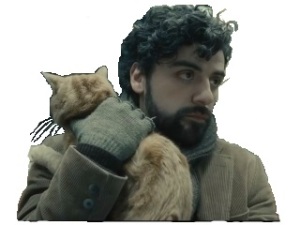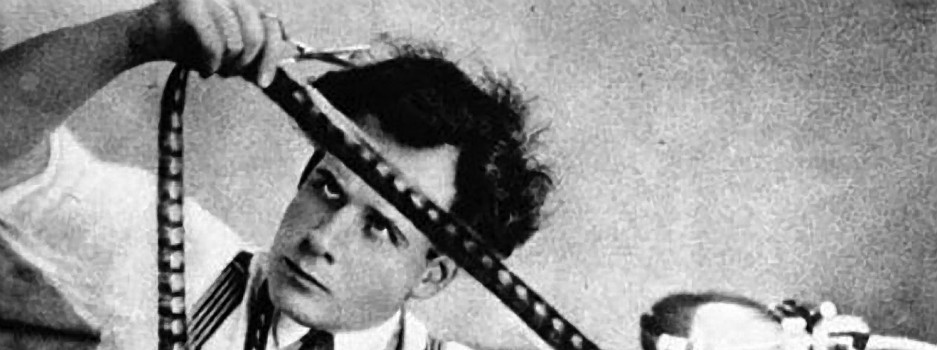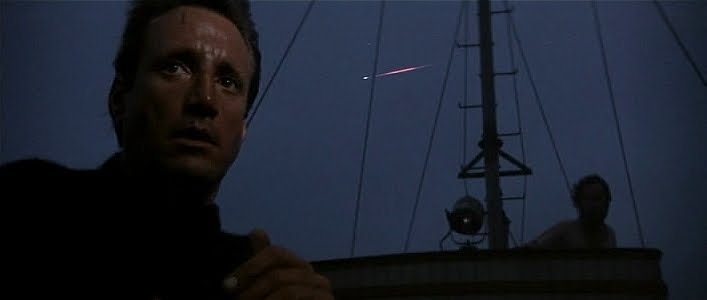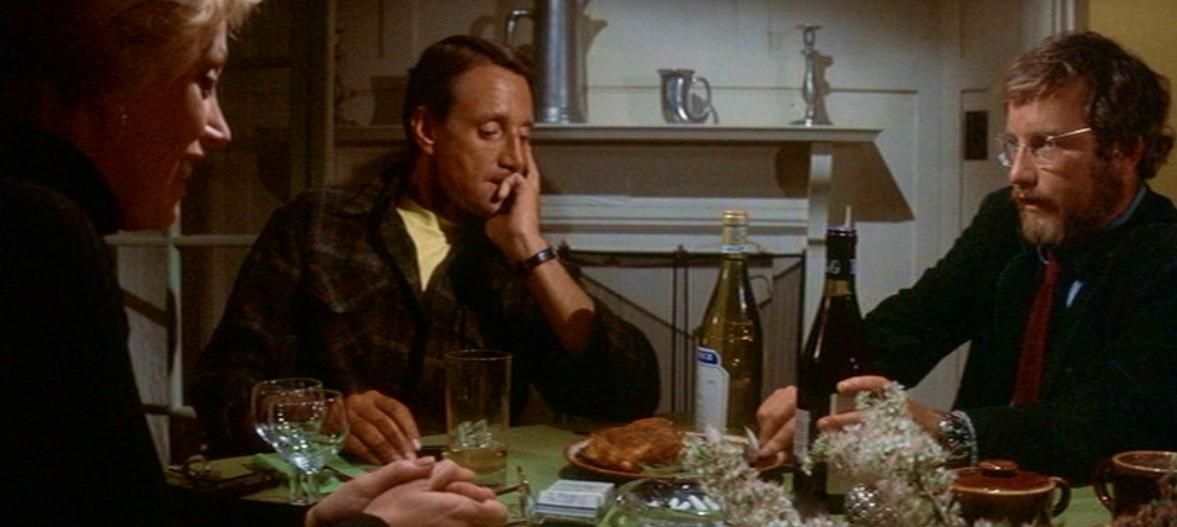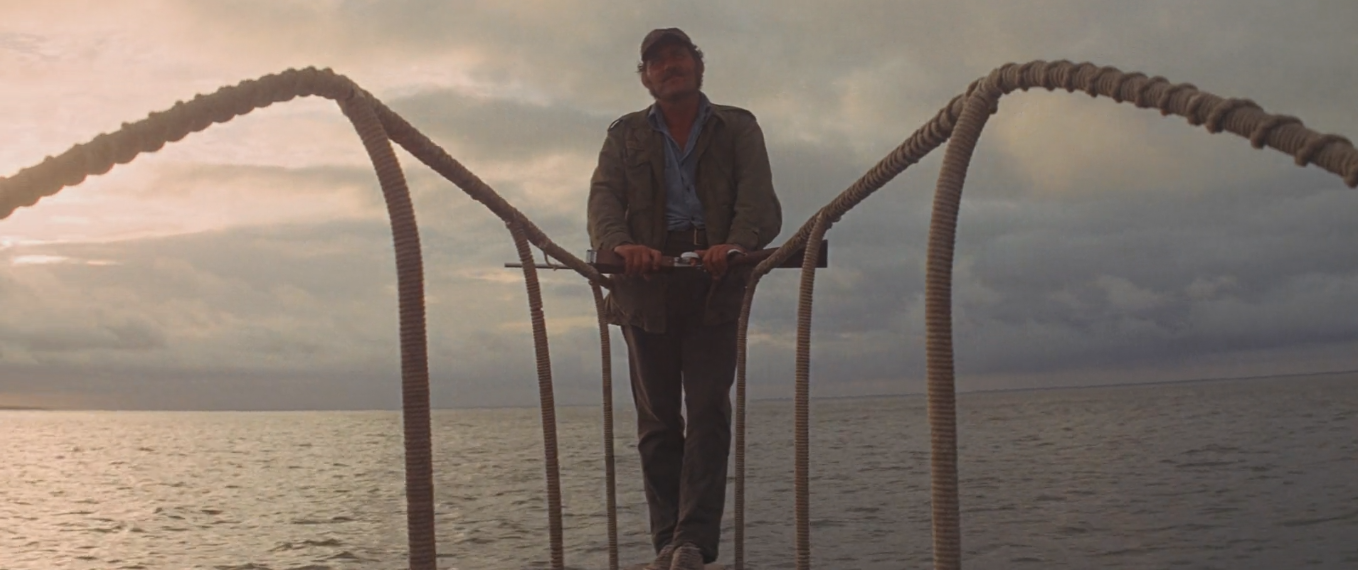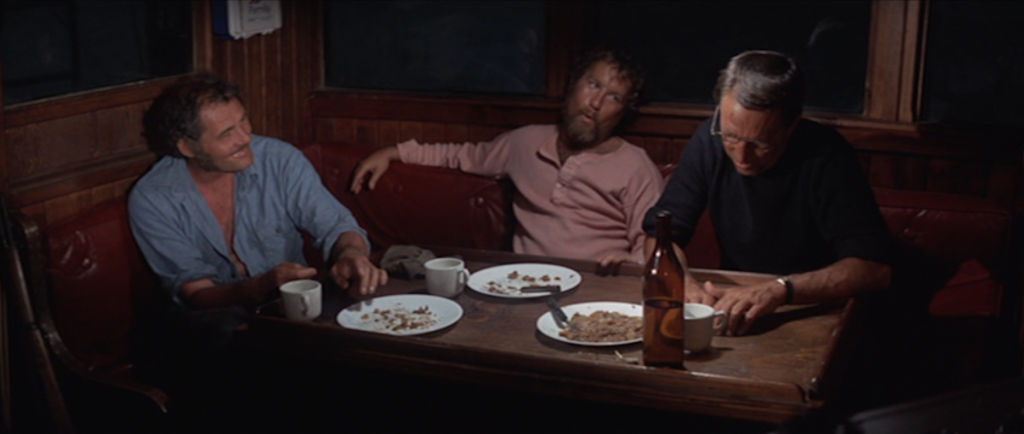
Halloween I really think is one of the most essential horror films made. It pretty much started the whole slasher movie craze that dominated the 80’s, but it’s honestly a lot better than any of the knock offs that came after. Not to say that no similar movies that came after were good, like the Nightmare on Elm Street franchise or the Scream franchise. But most of them were only taking the slasher premise, without adding anything else that made Halloween better than what audiences were expecting. I feel this is one of the quintessential films you can point to when you’re talking about minimalism in film, and doing so much with so little. Director John Carpenter was given a budget of only $300,000, but despite the limitations, the strengths of the movie make them almost unnoticeable. The dark and creepy cinematography, the memorable synthy score, the way the killer Michael Myers is built up, etc. I personally think the low budget feeling contributes as well because it makes the film feel more personal, like what you’re watching could happen in your own neighborhood. While you can knock the occasionally cheesy acting and the somewhat predictable plot (It wasn’t predictable at the time though), I think the hardest thing you can argue against in this movie is the perfectly crafted atmosphere. It’s because of that atmosphere why it is considered a classic Halloween night movie, and every aspect contributes to that feeling. While the Halloween factor adds a lot to the enjoyment, that’s not the only thing it has going for it either. Lemme tell you about it!
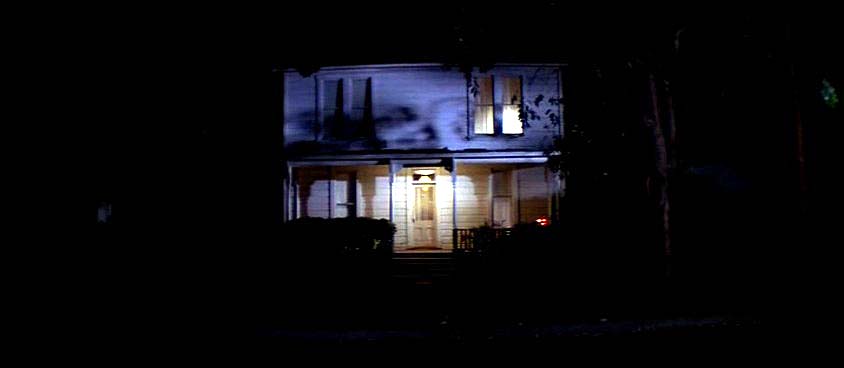
The first thing I need to mention is the opening scene. The use of the panaglide to represent Michael Myers spying on his sister immediately makes things tense and creepy, and that sense of dread only continues to build as the scene continues. Sure, this POV method has been used countless other times in many other similar horror movies. I think it works incredibly well here though because it’s the only POV shot in the movie, and we’re given no context as to what person’s point of view we’re supposed to be seeing until it’s revealed at the end. Imagine the audience seeing this scene for the first time, before anyone even knew who Michael Myers was. At first they must have been curious as to who this person is and why they’re spying. Once the lights in the sister’s room are turned off and we hear Carpenter’s score kick in, things start to feel foreboding. Then the boyfriend leaves and the knife is picked up. Oh God, they feel something in their stomach drop. Then we venture up to Judith Myers’ room, she’s killed brutally as she screams her brother’s name, and we venture back outside when the sound of a car arriving is heard. The one shot concludes (Or what appears to be one shot, it wasn’t entirely even though it’s edited to appear so.) when a mother and father walk towards the killer and pull off his mask, obviously confused. Then we see Michael’s face, and it turns out we’ve been watching the perspective of a cute faced 6-year-old boy this whole time, still holding the knife with a dead look in his eyes. The parents are speechless and look stunned, and we hold on this shot as the camera pans out to reveal the infamous scene of the murder. Jesus dude, even after you’ve seen this movie 10 times this scene is still pretty unsettling. The fact that Michael doesn’t say one line of dialogue or show any restraint the whole time, and yet he looks just like any normal kid you would see playing tag in the street. This is the first scene of the movie and it establishes everything you need to know about the next 90 minutes, as well as the antagonist. It’s accomplished in (Again, what appears to be) only two shots too. This isn’t the only example of Dean Cundey’s effective cinematography either.

Halloween does a good job of making the viewer feel like all of this is really taking place on Halloween night (Except for the fact of the green trees which makes you able to tell that it was shot in Spring. It may break your immersion a little bit, but oh well. At least they put in the effort of scattering some autumn leaves on the ground). I love the black and blue look of the night scenes, most of them are actually as dark as you would expect them to look in real life. The muted colors add a lot to the hopeless and gloomy tone. The Myers’ house, the house in which the murder of Michael’s sister occurred in 1963, looks believably abandoned and creepy compared to every other house as well. There’s a good contrast between the other lit up buildings and this smaller one that isn’t decorated. You can tell there’s just something off about it, and it makes sense to me why so many kids would spread rumors about this house and dare each other to go inside it. This film does a superb job of making you paranoid too. There’s some really great shots of Michael (aka The Shape) simply standing behind bushes or doors, staring silently in the darkness. A great example is when Tommy Doyle peaks through the blinds of babysitter Laurie Strode’s house and sees him standing in front of another house across the street. There’s plenty shots of Michael simply standing and staring throughout the movie, but I don’t think it’s done too much to the point where it gets boring. I like that there’s no cheesy angle change or jump scare sound effect when we see him, usually it’s just one wide shot while the subtler piano score plays. The shot I was talking about is only made more effective when we later see him carrying the body of Laurie’s friend Annie into the same house. Even when the Shape isn’t there you’re still wondering where the hell he is. I love it when Annie walks back into her house after getting unstuck from a window (Watch the movie, it could happen to anybody) and the camera pans away from the doorway as she talks on the phone. Then we pan back and he’s standing right there, staring as always, but then we repeat the same motions and he’s once again gone. Come on, it’s kinda corny but who doesn’t love some of that dramatic irony? Again, there’s no stupid sound effect, it’s done in just the right manor. There is truly always an insecure feeling in this film that nowhere is safe, that the Shape could be behind any window or tree. This is signified the most at the ending. Michael disappears after he falls out of a window, and afterwards we see a montage of all the different areas we’ve seen him appear in. During this slideshow his muffled breathing is heard, and it becomes louder and louder until we see one final shot of the Myers’ house. Man oh man, what could be creepier than that? This isn’t a zombie that will get you at a camping site, or a ghost that will somehow invade your dreams. This is a psychotic guy that will come to your neighborhood, that could come to any house, and that will kill anyone he feels like without remorse. It’s incredibly scary because it could actually happen, and there’s no way for you expect it either. These victims were just ordinary unassuming teenage girls going about their daily lives. Of course this concept is the most cliched idea for a horror film now, but you have to understand that this movie was one of the first of its kind. Way before the likes of the Scream and Scary Movie franchises came to be.
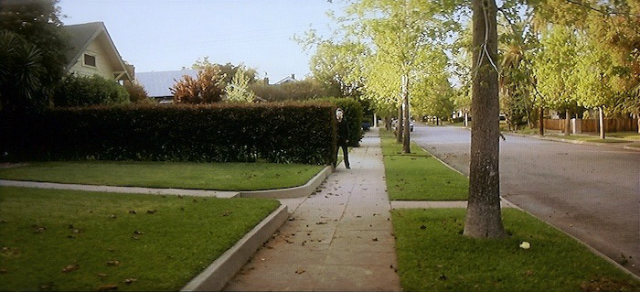
Some naysayers may say that most of the actors in this movie are too corny, and that Jamie Lee Curtis and Donald Pleasence play the only convincing or memorable characters. I disagree with that assessment. Do I think that the babysitter actresses deliver every single one of their lines in the most believable way? Not really. Do I think there are a few silly dialogue moments here and there? Yeah (That’s the fault of the writer though). However, there is one thing I think these characters excel at, and that’s being convincing high school girls. This adds an important relatable quality, because it makes the viewer feel like something this terrifying could happen even in the most average of neighborhoods. I didn’t grow up in the 70’s but they don’t seem too different from the teenagers of today. There’s smoking and talk about guys, but their characters don’t just stop there. I like that they all have memorable personalities. Annie is the more sarcastic and witty type (My favorite), Lynda is more of the ditsy cheerleader who likes having fun, and Laurie is the shy introvert who’s more observant of her surroundings. …Yeah, now that I think about it they all sound like huge stereotypes on paper. It’s the acting though that makes them feel more real I think, and the ways they interact with each other. I like Annie’s constant teasing of Laurie, like when she sees the Shape behind a hedge but he disappears by the time they walk over to it, and Annie says “Poor Laurie. Scared another one away”. It never feels too mean to me, like you can tell they have a good friendship and Annie only wants to push Laurie more. The scene in the car is a great example of their chemistry too, when Annie finally stops joking and seriously asks Laurie what boy she likes, and then eats it up. She later tries to set her up with the guy too despite her embarrassment. I can just tell that Annie means well and I like her character. ..It’s a real shame she had to have her throat sliced though. That’s the sad thing about when there’s actually well written characters in a horror movie, you get attached to them and forget that they’re probably gonna die… horribly. Maybe I should watch more crappy ones.
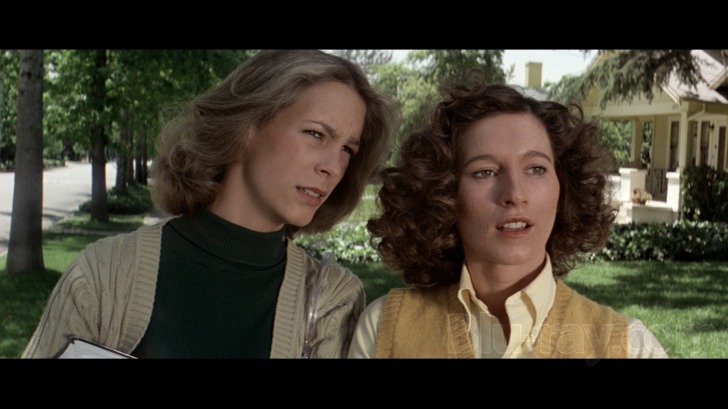
Anyway, I like Laurie too. Sure, the innocent virgin is always the person these types of movies focus on and it’s a tired trope, but Laurie doesn’t seem like a trope to me at all. Thanks to Jamie Lee Curtis, she feels like a real girl to me. She really seems like an average but genuinely kind teenager just going about her babysitting duties until she suddenly feels an ominous presence. She’s shy, but not too shy that she has no personality. I enjoy her chemistry with the boy Tommy in every scene that they’re in together. It gives the film more of a human feeling that you don’t get in most slasher flicks. For example, when she reassures him that she’ll protect him despite his fears that the boogeyman is outside, or when he shows her his comic book collection. She seems genuinely scared to me too in the scenes that warrant it. Especially in the more subtle stalking scenes, like when she slams the window shut after seeing Michael standing outside, or when she gets prank called by Annie but thinks it’s someone else. Out of all of the “last virgin standing” slasher movie trope girls, Laurie is my favorite (It wasn’t even a trope when the movie was made anyway). I genuinely feel sorry for her and root for her once the Shape finally reveals himself. Then there’s Lynda. ….Yeah, there isn’t really much to her character other than that she’s a dumb blonde. Not to say that PJ Soles doesn’t seem like she’s having fun with the character though. I like her chemistry with her boyfriend Bob when he’s carrying her up to Annie’s house, and when she says in a cute voice, “Go get me a beer”. They really seem like two naive teenagers just having fun on Halloween night. She says “Totally” a lot too, and that’s just funny. Maybe I’m only giving her a pass because I grew to like her character after watching the movie so many times, but I think she’s memorable despite her lack of depth.
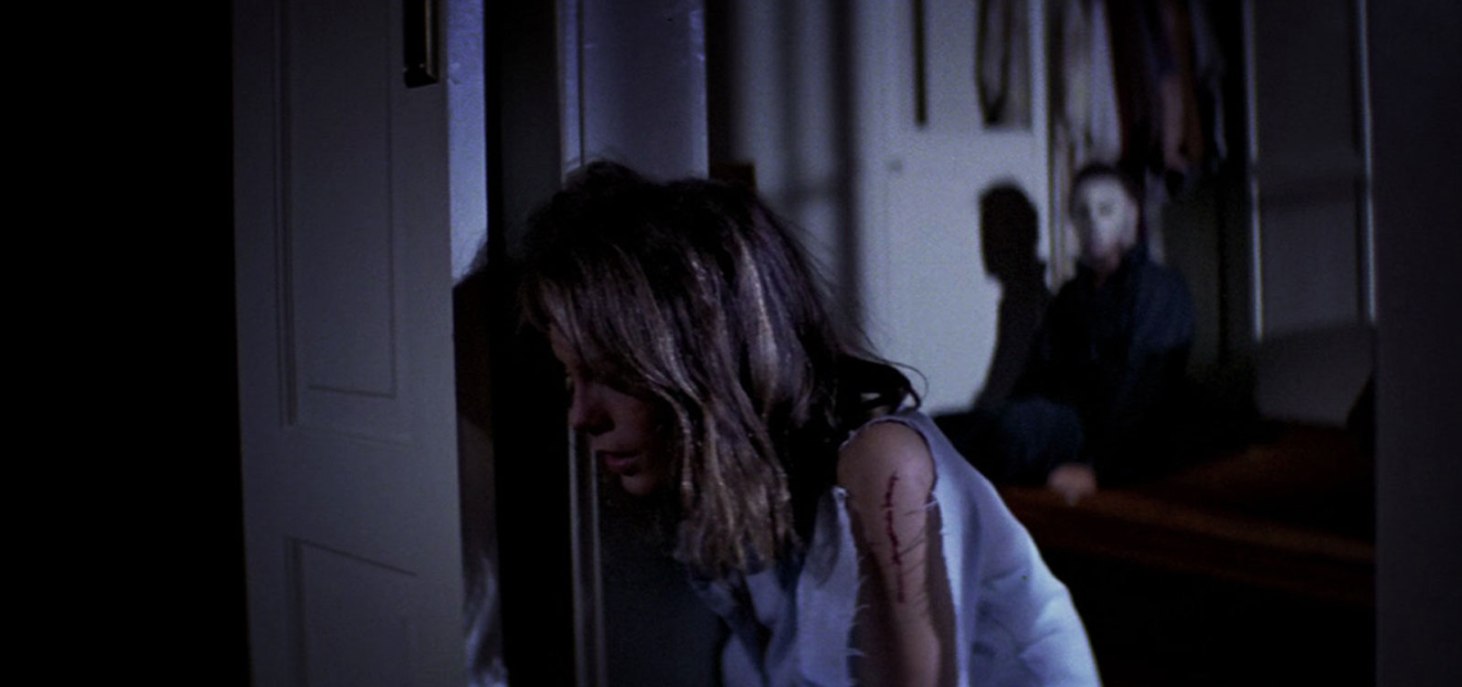
Well, how can I talk about this movie’s creepiness without mentioning the one lovable psycho who brings it all together? Obviously Michael Myers is the most memorable character, but why is that? What made people terrified of him and what made him different from other horror villains before him? Well it’s the way he’s presented more so than who he actually is that does the trick. There isn’t that much depth to him but that’s what makes him work. Typically the more you explain something, the less scary it becomes. That’s why I think it’s genius that Michael randomly murders his sister for no reason despite him coming from a completely normal family. He didn’t do it because he was abused, he didn’t do it out of malice or for personal gain (unlike another different movie that was called Halloween, made by a certain long haired gentleman). He just did it, and he only breaks out of his asylum so he can do it again. I think Dr. Sam Loomis sums him up best when he says in his famous monologue, “I met this six-year-old child, with this blank, pale, emotionless face, and the blackest eyes… the devil’s eyes. I spent eight years trying to reach him, and then another seven trying to keep him locked up because I realized that what was living behind that boy’s eyes was purely and simply… evil.” You can’t reason with him and you can’t run from him, so he’s basically the personification of evil. Yeah, that might seem like a basic motive for a villain, but I think it works when it’s done as well as in this movie. Some do it for the money, some do it because they love to, and some do it because they just do. You really get the feeling that Michael is something from another world in the way that he creepily seems to be at all places at once, and in his mannerisms. When Laurie breaks out of Annie’s house and runs back to her house, he simply walks after her. Think about it, which is more terrifying? If a guy is running after me with a knife, he probably wants to kill me. If a guy is walking after me, I have no idea what else to expect. It adds spectacularly to his emotionless character. Another example near the end of the film is when he rises back to life like a robot in the background of the shot, after Laurie once again thinks she’s killed him. You never get the feeling that the Shape is any sort of human at any point in the movie. But when his mask is finally torn off and you get a second to see his face, he once again just looks like a completely normal person. That’s the thing about psychopaths, they’re just humans with no sense of humanity. They could be in any city or any suburb in the world, and you’ll never really know who they are until they finally snap (Hopefully they make it as obvious as Michael though, considering he walks around carrying a knife and wearing a mask). That’s why the concept and presentation of Michael is one of the key elements of Halloween‘s atmosphere, and why the film genuinely terrified so many people in the 70’s.
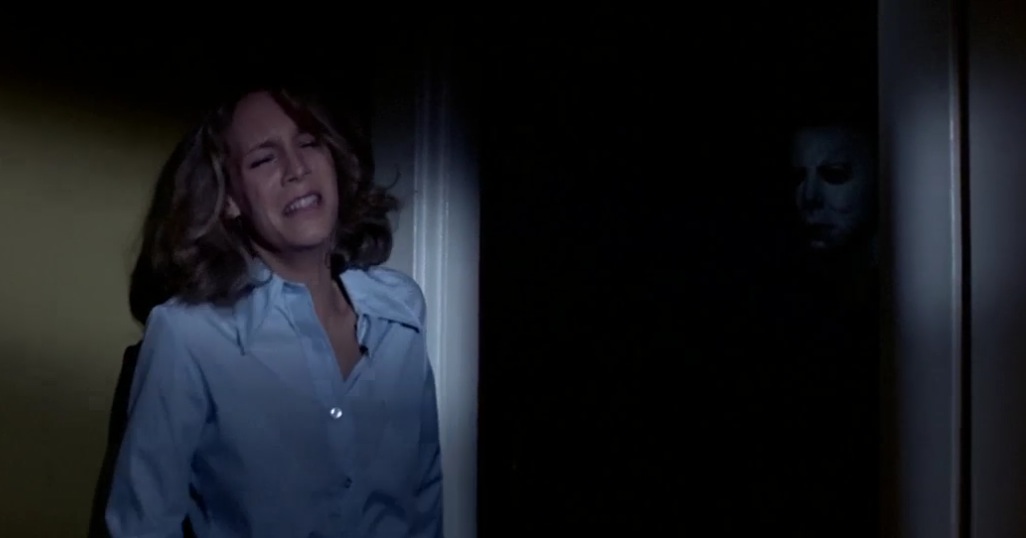
There’s one final factor I should touch on before I end this thing, and that is the music. It’s obvious that the Halloween theme may be the most memorable thing about the movie, because even if you’ve never watched a horror movie, as a kid you probably heard the song at a particular house at least once when you were trick-or-treating. That’s how iconic the theme has become. You essentially hear it everywhere every time October comes around and with good reason too because it feels like it was divinely made for this film. From the moment you hear it during the opening credits it immediately sets the mood, and you know this movie is going to stick with you. All of John Carpenter’s score does a fantastic job giving certain scenes more flavor and impact, even if it seems simplistic (This is similar to the Jaws theme now that I think about it). It really doesn’t matter because it accomplished what Carpenter set out to do (Another example of well done minimalism in this film). It perfectly creates the eerie mood that the film wanted to put you in, but at the same time it’s incredibly catchy. You won’t get that 5/4 time signature out of your head for a while after you see this film, believe me. Even with how catchy the soundtrack is, it still feels subtle to me. It’s only used when it feels needed, when the characters have nothing to say but the music does. I love the gentle piano theme that plays in Laurie’s first scene, because it’s actually somewhat peaceful while at the same time foreboding. I like the alarming octave keys that play during the chase scene, because it just feels perfectly understated. I even like that high pitched synth sound that plays every so often, because it reminds you of the 70’s. I honestly think this film would have faded into obscurity without the score, that’s how much it adds to it. Roger Ebert may have never gave the film the boost it needed to become a classic if those songs were never recorded (This actually happened, the film didn’t get as much notoriety until he and other critics gave it more praise). They’re the stitches that hold the cloth together.
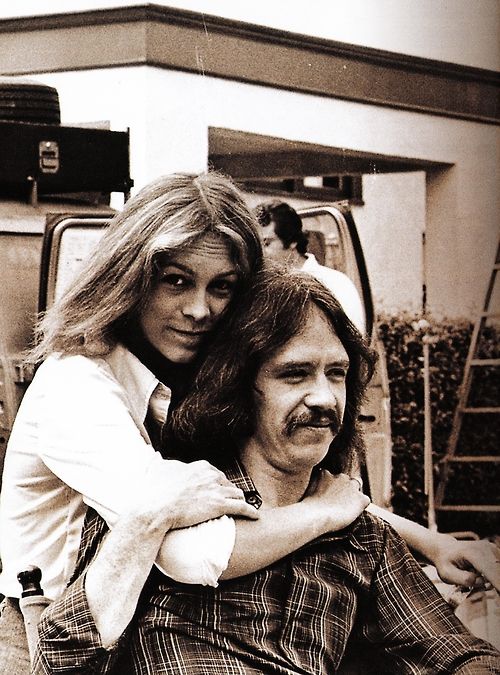
Well, that’s about all I can think of for now. People may not like Halloween because they think it was only admired at the time for the new formula, and that it isn’t any different than any slasher schlock that came after it. Those people may be justified because they just don’t like slasher movies, but I suggest if you’ve gotten to this point of the article and you’ve read everything I’ve written, you should really check this movie out even if you don’t like horror movies. Yes it might seem formulaic, it might seem tame and cheesy compared to what comes out today, but there’s a reason I spent this much time writing about it and why so many horror fans still appreciate right now. It isn’t just about blood, gore, and sex. You can watch some Friday the 13th movies for that. It’s about the way it looks, the way you relate to it, and the way it makes you afraid to go to sleep at night. It’s about Halloween.
